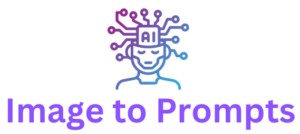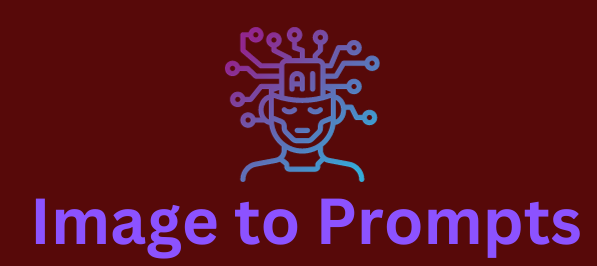Here are 100 more ChatGPT prompts for sales professionals
ChatGPT prompts List100+ Facebook prompts for engaging content:
-
“Introduce Yourself”
-
“Throwback Thursday”
-
“Caption This”
-
“Poll Time”
-
“Share Your Goals”
-
“Behind the Scenes”
-
“Spotlight on Employees”
-
“Customer Testimonials”
-
“Trivia Tuesday”
-
“Share a Recipe”
-
“Motivational Monday”
-
“Fan of the Week”
-
“Friday Funday”
-
“Product Spotlight”
-
ChatGPT prompts List”Ask Me Anything (AMA)”
-
ChatGPT prompts List”Caption This Quote”
-
ChatGPT prompts List”Local Spotlight”
-
“Share a Fun Fact”
-
“Interactive Quiz”
-
“National Day Celebration”
-
“Your Workspace”
-
“Flashback Friday”
-
“Share Your Pet”
-
“Caption Contest”
-
“Share Your Hobby”
-
“Free Resource Friday”
-
“Local Events”
-
“Share Your Favorite Book”
-
“Weekly Recap”
-
“Caption This Image”
-
“Share a Win”
-
“Monday Motivation”
-
“Share Your Playlist”
-
“Community Spotlight”
-
“Guess the Product”
-
“Meet the Team”
-
“Share a Local Tip”
-
“Favorite Childhood Memory”
-
“Two Truths and a Lie”
-
“Share Your Art”
-
“Testimonial Tuesday”
-
“Caption the Emojis”
-
“Share a Local Tradition”
-
“Product Comparison”
-
“Wacky Wednesday”
-
“Share Your Favorite Quote”
-
“Your Dream Vacation”
-
“Guess the Movie”
-
“Share a Local Recipe”
-
“Share Your Workspace”
-
“Weekly Goals”
-
“Local Business Shoutout”
-
“Describe Your Business in Three Words”
-
“Share Your Morning Routine”
-
“Share Your Favorite Podcast”
-
“What’s on Your Bucket List?”
-
“Your Favorite Childhood Cartoon”
-
“Guess the Emoji Movie Title”
-
“Share a Local Legend”
-
“Your Favorite Dessert”
-
“What’s Your Superpower?”
-
“Behind the Name”
-
“Share Your Fitness Routine”
-
“Local Artist Showcase”
-
“Your Morning Coffee”
-
“What’s in Your Bag?”
-
“Your Most Used Emoji”
-
“Share a Local Scenic Spot”
-
“Your Favorite TV Show Quote”
-
“Your Favorite Childhood Game”
-
“Share Your Local Slang”
-
“Guess the Celebrity Baby Photo”
-
“Your Work-from-Home Setup”
-
“Share Your Favorite Board Game”
-
“Your Favorite Quote About Success”
-
“What’s in Your Fridge?”
-
“Your Favorite Childhood TV Show”
-
“Share Your Pet’s Name”
-
“Your Favorite Season”
-
“Your Favorite Local Restaurant”
-
“Guess the Movie Plot in Emojis”
-
“Share Your Favorite Inspirational Book”
-
“Your Most Used App”
-
“Share a Travel Tip”
-
“Your Dream Job”
-
“Share Your Recent Accomplishment”
-
“Guess the Movie Character”
-
“Your Favorite Local Park”
-
“Your Favorite Podcast Genre”
-
“Guess the Song Lyrics”
-
“Share a DIY Tip”
-
“Your Favorite Childhood Candy”
-
“Guess the Animal Sound”
-
“Share Your Favorite Quote About Friendship”
-
“Your Favorite Type of Workout”
-
“Guess the Country Flag”
-
“Share Your Morning Routine Playlist”
-
“Your Favorite Childhood Cartoon Character”
-
“Guess the Movie Soundtrack”
-
“Your Most Used Emoji Combo”
ChatGPT prompts List 100+ YouTube prompts to inspire content creation:
-
Product Reviews “Review the latest [product] and share your honest opinions.”
-
Day in the Life “Take your viewers through a day in your life, showcasing your routines and activities.”
-
Behind the Scenes “Offer a behind-the-scenes look at how you create and edit your videos.”
-
Favorite Books/Movies/TV Shows “Share your current favorite books, movies, or TV shows and why you love them.”
-
Top Tech Gadgets “Highlight your favorite tech gadgets and discuss their features and benefits.”
-
Q&A Session “Answer questions from your viewers in a Q&A video. Encourage them to leave questions in the comments.”
-
DIY Project Tutorial “Create a step-by-step tutorial for a DIY project you recently completed.”
-
Travel Vlog “Document your recent trip and share the highlights and experiences.”
-
Fitness Routine “Share your workout routine or a fitness challenge you’re currently undertaking.”
-
Cooking/Baking Tutorial “Create a cooking or baking tutorial for a delicious recipe.”
-
Room/Home Tour “Take your viewers on a tour of your room or home, showcasing your favorite spaces.”
-
Monthly Favorites “Share your favorite products, apps, or experiences from the past month.”
-
Reaction Video “React to trending videos, trailers, or funny clips from the internet.”
-
Hair and Beauty Routine “Walk through your daily or weekly hair and beauty routine.”
-
Tech Review Roundup “Provide a roundup of the latest tech reviews and discuss your favorites.”
-
Language Learning Progress “Document your language learning journey and share tips for picking up a new language.”
-
Challenge Video “Take on a popular challenge and document your experience.”
-
Educational Tutorial “Create an educational tutorial on a subject you’re passionate about.”
-
Pet Showcase “Introduce your pets to your audience and share cute or funny moments.”
-
Fashion Lookbook “Create a lookbook showcasing your favorite fashion styles.”
-
Reaction to Old Videos “React to and comment on your own old videos for a nostalgic trip.”
-
Bookshelf Tour “Show off your book collection and share recommendations.”
-
Gaming Session “Live-stream or record a gaming session with commentary.”
-
Interview with a Guest “Invite a guest for an interview on a topic of mutual interest.”
-
How-To Guide “Create a detailed how-to guide on a specific skill or task.”
-
Collaboration with Another YouTuber “Collaborate with another YouTuber for a joint video or series.”
-
Morning Routine “Film your morning routine and share tips for a productive start to the day.”
-
Music Playlist “Share your current favorite music playlist or discover new music together with your audience.”
-
Tech Haul “Showcase your recent tech purchases in a haul video.”
-
Fitness Challenge “Take on a fitness challenge and document your progress.”
-
App Review “Review and demonstrate your favorite apps for productivity, entertainment, or health.”
-
Parenting Tips “Share parenting tips, advice, or funny anecdotes.”
-
Learn a New Skill “Document your journey as you learn a new skill, whether it’s painting, coding, or playing an instrument.”
-
DIY Home Decor “Create and showcase a DIY home decor project.”
-
Productivity Hacks “Share your favorite productivity hacks and tools.”
-
Skincare Routine “Walk through your skincare routine, including favorite products and tips.”
-
Vlog Your Workday “Take your audience through a typical workday, sharing your tasks and challenges.”
-
Reaction to Subscriber’s Content “React to and review content created by your subscribers.”
-
Virtual Tour “Explore and virtually tour interesting places, museums, or landmarks.”
-
Healthy Recipes “Share your favorite healthy recipes and cooking tips.”
-
Photography Tips “Provide tips and tricks for capturing great photos with different types of cameras.”
-
Current Events Commentary “Discuss and share your thoughts on current events or trending topics.”
-
Review Your Old Tech “Review and reminisce about your old tech gadgets and devices.”
-
Gadget Wishlist “Create a wishlist of tech gadgets you’re excited to try or purchase.”
-
Budgeting Tips “Share your budgeting tips and how you manage your finances.”
-
Minimalist Lifestyle Tips “Discuss and showcase aspects of a minimalist lifestyle.”
-
Review Your Favorite Movies “Create in-depth reviews of your all-time favorite movies.”
-
Gardening Tips “Share tips and tricks for gardening, whether it’s indoor plants or outdoor gardens.”
-
Unboxing Video “Unbox and review a product you recently purchased.”
-
Language Challenge “Take on a language challenge, like speaking only a foreign language for a day.”
-
Taste Test “Conduct a taste test of new foods, snacks, or beverages.”
-
Motivational Speech “Share motivational thoughts, advice, or personal experiences to inspire your audience.”
-
Review Your Favorite Apps “Provide detailed reviews of your favorite mobile apps and their features.”
-
Day in the Life of a [Job Title] “Film a day in the life video showcasing what a typical day is like in your profession.”
-
Top 10 [Genre] Movies “List and discuss your top 10 favorite movies in a specific genre.”
-
Hiking or Outdoor Adventure Vlog “Document a hiking or outdoor adventure and share the breathtaking views.”
-
Technology Predictions “Share your predictions for upcoming technology trends and innovations.”
-
Reaction to Viral Trends “React to and participate in the latest viral trends on social media.”
-
Book Review and Discussion “Review a recent book you read and invite viewers to join a discussion.”
-
Home Office Setup Tour “Showcase your home office setup and share tips for remote work productivity.”
-
Review Your Favorite Podcasts “Discuss and recommend your favorite podcasts for different interests.”
-
Review Your Favorite Board Games “Share your thoughts on and demonstrate your favorite board games.”
-
Home Workout Routine “Share your go-to home workout routine for staying fit.”
-
Day in the Life of a Student “Film a day in the life video to show what a typical day looks like for a student.”
-
Tech Throwback “Explore and reminisce about old tech gadgets from the past.”
-
Travel Planning Tips “Share your tips for planning a budget-friendly and memorable trip.”
-
Review Your Favorite TV Shows “Discuss and review your favorite TV shows, seasons, or episodes.”
-
**Favorite
-
Effective Email Outreach “Generate compelling email templates for reaching out to potential clients.”
-
Handling Sales Burnout “Provide strategies for overcoming and preventing burnout in a sales career.”
-
CRM Software Selection “Recommend criteria for choosing the best CRM software for sales teams.”
-
Cold Calling Success Tips “Offer effective tips for successful cold calling in sales.”
-
Customer Feedback Analysis “Help analyze customer feedback to improve products and sales strategies.”
-
Sales Forecasting Techniques “Generate insights on accurate sales forecasting methods and tools.”
-
Social Proof Utilization “Suggest ways to leverage social proof in the sales process for increased credibility.”
-
Lead Qualification Strategies “Provide a guide to effectively qualify and prioritize leads in sales.”
-
Sales Team Motivation “Generate ideas for motivating and energizing a sales team for peak performance.”
-
Utilizing Customer Testimonials “Offer tips for effectively incorporating customer testimonials into sales pitches.”
-
Handling Sales Policy Changes “Generate responses for communicating and handling changes in sales policies.”
-
Sales Analytics Implementation “Provide insights on implementing effective sales analytics for data-driven decision-making.”
-
Customer Persona Development “Help in creating detailed customer personas for targeted sales efforts.”
-
Social Media Listening for Sales “Suggest tools and strategies for listening to social media conversations to inform sales efforts.”
-
Sales Training Program Design “Assist in designing a comprehensive and effective sales training program.”
-
Customizing Sales Pitches “Generate personalized sales pitch templates for different customer segments.”
-
Sales Metrics Tracking “Provide a list of essential sales metrics to track for performance evaluation.”
-
Emotional Intelligence in Sales “Explore the role of emotional intelligence in building successful client relationships.”
-
Customer Education Strategies “Offer ideas for educating customers about products or services during the sales process.”
-
Sales Partnership Development “Suggest strategies for forming and nurturing partnerships to boost sales.”
-
Handling Ethical Dilemmas in Sales “Generate responses for navigating ethical challenges in the sales profession.”
-
Sales Collaboration Tools “Recommend collaboration tools to enhance communication within sales teams.”
-
International Sales Tips “Offer advice on navigating cultural nuances in international sales.”
-
AI Integration in Sales “Explore ways to integrate artificial intelligence in sales processes for efficiency.”
-
Customer Satisfaction Surveys “Assist in creating effective customer satisfaction surveys for sales feedback.”
-
Gamification in Sales “Suggest ways to incorporate gamification to boost sales team engagement.”
-
Handling Product Returns “Generate responses for handling customer product returns and maintaining satisfaction.”
-
Sales Incentive Programs “Provide ideas for creating effective sales incentive programs to drive performance.”
-
Sales and Marketing Alignment “Explore strategies for aligning sales and marketing efforts for better collaboration.”
-
Social Selling Compliance “Offer tips on maintaining compliance while engaging in social selling activities.”
-
Effective Sales Demos “Generate guidelines for delivering compelling and effective product demonstrations.”
-
Customer Journey Mapping “Help in mapping the customer journey for improved sales strategies.”
-
Sales Technology Trends “Explore emerging trends in sales technology and their potential impact.”
-
Sales Channel Optimization “Provide strategies for optimizing sales channels for maximum reach and impact.”
-
Subscription-based Sales Models “Suggest approaches for successfully selling subscription-based products or services.”
-
AI-Powered Personalization in Sales “Explore ways to leverage AI for personalized sales interactions.”
-
Creating Sales Playbooks “Assist in developing comprehensive sales playbooks for various scenarios.”
-
Sales Copywriting Techniques “Generate effective copywriting techniques for sales materials and pitches.”
-
Customer Engagement Strategies “Provide tips for fostering ongoing engagement with customers beyond the initial sale.”
-
Sales Leadership Development “Offer insights on developing effective leadership skills in sales roles.”
-
Sales Data Security “Suggest best practices for maintaining data security in sales processes.”
-
Customer Advocacy Programs “Generate ideas for creating customer advocacy programs to boost referrals.”
-
Sales Negotiation Role-Playing “Provide scenarios for role-playing to improve sales negotiation skills.”
-
Industry-Specific Sales Strategies “Offer tailored strategies for sales success in specific industries.”
-
Sales and Customer Support Collaboration “Explore ways to enhance collaboration between sales and customer support teams.”
-
Sales Automation Best Practices “Provide best practices for implementing sales automation without losing personal touch.”
-
Sustainable Sales Practices “Explore sustainable and ethical practices for long-term sales success.”
-
Handling High-Volume Sales “Generate strategies for effectively managing high-volume sales scenarios.”
-
Sales Territory Management “Offer tips for efficient management of sales territories for optimal performance.”
-
Handling Seasonal Sales Fluctuations “Provide strategies for navigating seasonal fluctuations in sales.”
-
Sales Data Visualization “Explore effective ways to visualize sales data for better insights.”
-
Emotional Selling Techniques “Suggest techniques for incorporating emotional appeal in sales presentations.”
-
AI-Powered Lead Scoring “Explore how AI can enhance lead scoring for more accurate prioritization.”
-
Sales Training Evaluation “Provide criteria for evaluating the effectiveness of sales training programs.”
-
Sales and Customer Experience Alignment “Explore strategies for aligning sales efforts with overall customer experience goals.”
-
Crisis Management in Sales “Generate responses for handling sales crises and maintaining customer trust.”
-
Sales Webinar Best Practices “Offer tips for conducting engaging and effective sales webinars.”
-
Diversity and Inclusion in Sales “Explore the importance of diversity and inclusion in building successful sales teams.”
-
Sales Feedback Loops “Suggest methods for creating effective feedback loops within sales teams.”
-
Sales Event Planning “Assist in planning and executing successful sales events for lead generation.”
-
Sales and AI Ethics “Explore ethical considerations when integrating AI into sales processes.”
-
Customer Loyalty Programs “Provide ideas for creating customer loyalty programs to drive repeat business.”
-
Sales Analytics for Forecasting “Explore advanced analytics techniques for more accurate sales forecasting.”
-
Sales Resilience Training “Offer exercises and strategies for building resilience in sales professionals.”
-
Mobile Sales Strategies “Suggest strategies for effectively selling in a mobile-first environment.”
-
Sales Data Cleaning “Provide tips for maintaining clean and accurate data in sales databases.”
-
Sales and Legal Compliance “Explore the legal considerations in sales processes and ensure compliance.”
-
Sales and AI Personalization “Suggest ways to personalize sales interactions using AI without being intrusive.”
-
Sales and Mental Health “Explore the connection between mental health and sales performance.”
-
Sales and Customer Empathy “Highlight the importance of empathy in building strong customer relationships in sales.”
-
Elevator Pitch Refinement “Craft a compelling elevator pitch for various products or services.”
-
Handling Price Resistance “Generate responses to address customer resistance to pricing.”
-
Customer Needs Assessment “Help me develop a systematic approach to assess and understand customer needs.”
-
Creating Sales Presentations “Assist in creating engaging and persuasive sales presentations.”
-
Consultative Selling Tips “Offer insights on implementing consultative selling techniques.”
-
Value Proposition Development “Generate ideas for crafting a powerful value proposition for products or services.”
-
Follow-up Strategies “Provide effective strategies for following up with potential clients after initial contact.”
-
Objection Prevention Techniques “Suggest proactive measures to prevent objections before they arise in the sales process.”
-
Customer Relationship Management “Share best practices for managing and nurturing long-term customer relationships.”
-
Handling Difficult Clients “Generate responses for handling challenging or difficult clients in a sales context.”
-
Social Selling Tactics “Offer tips for leveraging social media platforms in the sales process.”
-
Closing Large Deals “Provide strategies for successfully closing larger and more complex deals.”
-
Storytelling in Sales “Explore the role of storytelling in sales and tips for incorporating it effectively.”
-
Time Management for Sales Professionals “Offer time management techniques specifically tailored for sales professionals.”
-
Networking for Sales Success “Provide advice on effective networking strategies to boost sales success.”
-
Product Knowledge Enhancement “Generate ideas for continuously improving product knowledge to enhance sales effectiveness.”
-
Handling Sales Rejections “Share strategies for maintaining motivation and resilience after facing sales rejections.”
-
Building Trust with Clients “Offer insights on how to build and maintain trust with clients throughout the sales process.”
-
Negotiation Skills Improvement “Provide tips for enhancing negotiation skills in sales interactions.”
-
Upselling and Cross-Selling Techniques “Generate effective techniques for upselling and cross-selling products or services.”
-
Sales Funnel Optimization “Share strategies for optimizing the sales funnel to increase conversions.”
-
Customer Retention Strategies “Provide insights on retaining customers and fostering loyalty over the long term.”
-
Handling Competitor Comparisons “Generate responses for addressing and overcoming comparisons with competitors.”
-
Personal Branding for Sales Professionals “Offer advice on building a strong personal brand to enhance sales credibility.”
-
Leveraging Technology in Sales “Explore ways to leverage technology for improved efficiency and effectiveness in sales.”
-
Building a Referral Network “Provide tips for establishing and growing a successful referral network in sales.”
-
Continuous Learning in Sales “Generate ideas for ongoing professional development to stay ahead in the ever-evolving sales landscape.”
Power of Artificial Intelligence in Content Creation
Outline:
I. Introduction
A. Definition of Artificial Intelligence (AI) B. Relevance of AI in Content Creation ChatGPT prompts List
II. Understanding SEO and Its Evolution
A. Basic Concepts of SEO B. How SEO Has Evolved Over Time C. The Role of AI in Enhancing SEO
III. The Importance of Unique and SEO-Optimized Content
A. Why Unique Content Matters B. The Significance of SEO Optimization C. Striking the Right Balance
IV. Leveraging AI Tools for Keyword Research
A. Introduction to Keyword Research B. The Limitations of Traditional Keyword Research C. How AI Transforms Keyword Research
V. Content Creation Process with AI Assistance
A. Using AI for Generating Topic Ideas B. Crafting Engaging Introductions and Headlines C. Ensuring Cohesiveness Throughout the Content
VI. Overcoming Perplexity and Burstiness in Content
A. Addressing Perplexity in AI-Generated Content B. Balancing Burstiness for Enhanced Readability C. The Art of Maintaining Specificity and Context
VII. Writing Style and Tone in AI-Generated Content
A. Crafting Content in a Conversational Style B. The Importance of Personal Pronouns C. Keeping it Simple Yet Engaging
VIII. The Role of Active Voice in AI-Written Content
A. Understanding the Impact of Active Voice B. Demonstrating Authority and Clarity C. Examples of Active Voice in Content
IX. Incorporating Rhetorical Questions in AI-Driven Writing
A. Engaging Readers with Thoughtful Questions B. Creating a Dialogic Experience C. Enhancing User Interaction
X. Analogies and Metaphors for Effective Communication
A. The Power of Analogies in Simplifying Complex Concepts B. Using Metaphors to Evoke Emotions C. Balancing Creativity and Clarity
XI. Writing Detailed Paragraphs for Reader Engagement
A. The Structure of Engaging Paragraphs B. Providing Depth and Insight C. Capturing and Maintaining Reader Attention
XII. The Art of Keeping it Brief in AI-Generated Content
A. The Challenge of Conciseness B. Strategies for Keeping Content Brief Yet Impactful C. Avoiding Information Overload
XIII. Conclusion
A. Recap of AI’s Role in Content Creation B. Emphasizing the Importance of Human Touch C. The Future Landscape of AI-Enhanced Content
XIV. FAQs
A. How does AI impact the creativity of content? B. Can AI-generated content truly replace human creativity? C. What challenges should one be aware of when using AI for content creation? D. Is there a risk of losing the personal touch in AI-written content? E. How can individuals ensure the ethical use of AI in content creation?
Unlocking the Power of Artificial Intelligence in Content Creation

ChatGPT prompts List ChatGPT prompts List In the ever-evolving landscape of digital content, the utilization of Artificial Intelligence (AI) has become a game-changer. This article delves into the intricacies of how AI is revolutionizing content creation while ensuring uniqueness, SEO optimization, and reader engagement.
Understanding SEO and Its Evolution
Basic Concepts of SEO
SEO, or Search Engine Optimization, is the backbone of online visibility. It involves optimizing content to rank higher on search engine result pages (SERPs), driving organic traffic.
How SEO Has Evolved Over Time ChatGPT prompts List
From keyword stuffing to complex algorithms, SEO has witnessed a dynamic evolution. Modern SEO demands a balance between user experience and search engine requirements.
The Role of AI in Enhancing SEO
AI algorithms analyze user behavior, trends, and search patterns, helping to refine SEO strategies. Machine learning enables adaptive SEO techniques for better results.
The Importance of Unique and SEO-Optimized Content
Why Unique Content Matters
Unique content not only attracts readers but also satisfies search engine algorithms. It distinguishes a brand and fosters authenticity.
The Significance of SEO Optimization
SEO optimization ensures that content is easily discoverable. A well-optimized piece aligns with search queries, enhancing its visibility.
Striking the Right Balance
The synergy of uniqueness and SEO optimization is critical. Striking the right balance ensures content is not only discoverable but also valuable to the audience.
Leveraging AI Tools for Keyword Research
Introduction to Keyword Research
Keywords are the foundation of SEO. AI tools revolutionize keyword research, providing insights beyond traditional methods.
The Limitations of Traditional Keyword Research
Traditional methods might miss nuances in user intent. AI, with its contextual understanding, refines keyword selection.
How AI Transforms Keyword Research
AI tools process vast amounts of data, predicting user intent and suggesting relevant keywords. This enhances the effectiveness of content targeting.
Content Creation Process with AI Assistance
Using AI for Generating Topic Ideas
AI analyzes trending topics, user preferences, and industry trends, suggesting engaging topics for content creation.
Crafting Engaging Introductions and Headlines
AI-driven tools excel in creating attention-grabbing introductions and headlines that captivate readers from the outset.
Ensuring Cohesiveness Throughout the Content
AI ensures a seamless flow in content. It helps maintain consistency and relevance, enhancing the overall reading experience.
Overcoming Perplexity and Burstiness in Content
Addressing Perplexity in AI-Generated Content
AI sometimes produces ambiguous content. Overcoming perplexity involves refining algorithms for clearer outputs.
Balancing Burstiness for Enhanced Readability
While burstiness can engage readers, it should be balanced. AI algorithms must strike a harmony between surprise and coherence.
The Art of Maintaining Specificity and Context
AI content must remain specific to the topic and maintain contextual relevance. Fine-tuning algorithms achieves this delicate balance.
Writing Style and Tone in AI-Generated Content
Crafting Content in a Conversational Style
AI-generated content benefits from a conversational tone. It makes the content more relatable and engaging for readers.
The Importance of Personal Pronouns
Incorporating personal pronouns adds a human touch to AI-written content. It creates a connection with the audience.
Keeping it Simple Yet Engaging
AI-written content should be easily digestible. Simplicity in language enhances readability and user experience.
The Role of Active Voice in AI-Written Content
Understanding the Impact of Active Voice
Active voice adds dynamism to content. AI algorithms can be programmed to prioritize active voice for a more compelling narrative.
Demonstrating Authority and Clarity
Active voice instills confidence in the message, conveying authority. Clarity is essential for effective communication.
Examples of Active Voice in Content
Examples demonstrating the transformation of passive voice into active voice showcase the impact on reader engagement.
Incorporating Rhetorical Questions in AI-Driven Writing
Engaging Readers with Thoughtful Questions
Rhetorical questions invite readers to reflect, engaging them in a mental dialogue with the content.
Creating a Dialogic Experience
AI-generated content can benefit from creating a conversational experience through strategically placed rhetorical questions.
Enhancing User Interaction
Rhetorical questions prompt user interaction, encouraging readers to ponder, comment, and share their perspectives.
Analogies and Metaphors for Effective Communication
The Power of Analogies in Simplifying Complex Concepts
Analogies simplify intricate ideas. AI can use analogies to make complex concepts more accessible to a broader audience.
Using Metaphors to Evoke Emotions
Metaphors add depth to content, evoking emotions. AI-generated metaphors can enhance the emotional impact of written pieces.
Balancing Creativity and Clarity
AI algorithms should strike a balance between creative expression and clarity, ensuring the effectiveness of analogies and metaphors.
Writing Detailed Paragraphs for Reader Engagement
The Structure of Engaging Paragraphs
Paragraphs in AI-written content should have a logical structure, providing a smooth reading experience.
Providing Depth and Insight
In-depth paragraphs contribute to reader understanding. AI can delve into details without losing reader interest.
Capturing and Maintaining Reader Attention
AI-written content must capture and retain reader attention. Techniques like narrative flow and intriguing details help achieve this.
The Art of Keeping it Brief in AI-Generated Content
The Challenge of Conciseness
AI faces the challenge of balancing detail with brevity. Algorithms need refinement to achieve concise yet informative content.
Strategies for Keeping Content Brief Yet Impactful
AI algorithms can be fine-tuned to prioritize essential information, ensuring concise yet impactful content creation.
Avoiding Information Overload
Readers appreciate content that is informative without overwhelming them. AI should focus on delivering value without inducing information overload.
Conclusion
In conclusion, the integration of AI in content creation is transformative. While AI enhances efficiency, the human touch remains irreplaceable. The future promises a collaborative landscape where AI and human creativity harmoniously coexist.
FAQs
Q1: How does AI impact the creativity of content? AI complements human creativity by providing data-driven insights, topic suggestions, and creative elements, fostering a symbiotic relationship.
Q2: Can AI-generated content truly replace human creativity? AI augments, but does not replace, human creativity. The uniqueness of human perspective and emotion cannot be replicated by algorithms.
Q3: What challenges should one be aware of when using AI for content creation? AI may produce perplexing or overly bursty content. It’s crucial to fine-tune algorithms for clarity and coherence.
Q4: Is there a risk of losing the personal touch in AI-written content? While AI can lack a personal touch, incorporating conversational elements, personal pronouns, and engaging writing styles can mitigate this risk.
Q5: How can individuals ensure the ethical use of AI in content creation? Ethical use involves transparency, disclosing AI involvement, and regularly evaluating content to align with ethical standards.
Get Access Now: https://bit.ly/J_Umma




